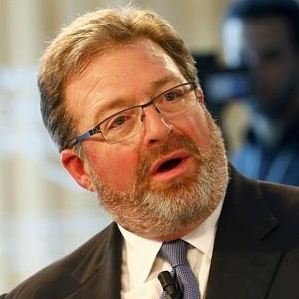News
Thomson Reuters returning to its roots in 'push back into Canada'
Friday 7 October 2016

Thomson Reuters is undertaking a major expansion in Canada with a plan to build a technology hub and a transfer to Toronto by its two top executives.
Chief executive James Smith (photo) and chief financial officer Stephane Bello will both move from Stamford, Connecticut next year. Additional management roles will be relocated and recruited locally in Toronto over the next few years.
The new Toronto Technology Centre will increase the company’s Canadian headcount by 400 high-tech jobs over the next two years. It expects to add 1,500 jobs in the longer term, mostly by hiring from the local market.
The company has developers in 43 countries, but only five large hubs, stretching from Bangalore to Dallas. Toronto will be its sixth.
“Canada is not only our home, it is home to an emerging ecosystem of world-class technology talent,” Smith said in a statement announcing the moves.
In a newspaper interview, he said: “We can’t create enough innovation inside our company alone in order to survive. So we need those labs, we need a network and ecosystem of outside developers. Frankly, the multi-cultural aspect of Toronto is attractive to us. It’s an environment that looks like our client base around the world.”
The company expects to start hiring within weeks, and as a signal of its renewed corporate presence in Canada, Smith and Bello will both move to Toronto next year, the city’s Globe and Mail reported. The newspaper is owned by Woodbridge, investment vehicle of Thomson Reuters’ majority owners, the Thomson family of Canada.
Thomson Reuters is already incorporated in Ontario, but most of its top executives live near the company’s office in Stamford, in New York or in Europe. Several years ago, it became clear that the company’s connection to Canada had waned, the Globe and Mail said, but Smith made plain his desire to “push back into Canada”.
Canadian prime minister Justin Trudeau described the Thomson Reuters announcement as “a good day that’s been a long time coming”.
Trudeau first met Smith at the World Economic Forum in Davos, Switzerland, where the prime minister and international trade minister Chrystia Freeland - a former Reuters executive - tried to pitch Canada as a country worth investing in. The two men met again in New York for a more granular discussion and hit it off, the newspaper said.
“Jim surprised me with having a high level of sensitivity and nostalgia about the fact that Thomson Reuters is a Canadian company,” Trudeau said.
The next step was ironing out the friction points. The Canadian government offered no financial incentives, but provided assurances that red tape issues, such as immigration paperwork, would be handled smoothly, tapping “the right bureaucrats to lean in on the file,” Trudeau said, although he added: “We weren’t making big exceptions for Thomson Reuters, either.”
“It’s not about incentives, but it is about concierge service,” Freeland said, adding: “This is a lot of jobs coming to Canada.”
Thomson Reuters is keen to build bridges with tech startups, but a company of its size can’t do it all with “one-off relationships,” Smith said. “What we asked for was just access and introductions to the right people so that we would have access to talent.”
Over the past year, Thomson Reuters has moved more senior staff into Canada, where the company currently has 1,200 employees. The goal was to make better connections with major Canadian clients and to find opportunities to land government clients.
The Toronto Technology Centre will initially be housed in Bremner Tower, east of the city’s landmark CN Tower, and will focus on areas such as cognitive computing, visualisation and cloud development.
“They’ll be development jobs, software engineers designing and building products,” Smith said. “This will be where we build stuff.” ■
- SOURCE
- The Globe and Mail
- « Previous
- Next »
- 793 of 2174